While the government of the Russian Federation cheerfully reports a decrease in prices for carrots as the crop matures, the construction industry continues to be in a fever even by the end of the “hot season” in 2021. In August, "Minstroy" offers to simultaneously believe that the rise in prices "one way or another will stabilize" and get used to the "new reality." As economist Andrey Movchan commented, we always still have it like Fazil Iskander in Rabbits and Boas: natural causes are credited to the government, and government errors are considered natural causes. However, construction industry workers are not in the mood for jokes - Maxim Kirsanov, a special correspondent for Gorproekt magazine, spoke with them to understand whether long-term construction will return amid the need to constantly revise estimates, or vice versa, as the authorities promise, they will be defeated.
Long-term construction cases: is there any progress?
The problem of long-term construction is one of the few systemic and generally recognized problems of the Russian society and economy that have been consistently solved for decades, starting at least with the adoption of the law on business construction (FZ 214) in 2004. During this time, many new laws, by-laws and initiatives have been adopted, up to the creation in 2021 of the “Single Construction Customer” to work with problematic facilities being built by the state, and the transfer of private owners to escrow accounts for housing construction (about 65% of throughout the country). However, the problem, even after recognition and systematic work, has not gone away. In the fall of 2020, the Accounts Chamber of the Russian Federation identified almost 75,000 “construction in progress” (“ONS”) financed from the budget. The volume of investments in construction in progress amounted to more than 5 trillion rubles. Including only on the basis of the results of the dock-like 2019, auditors for 2019 identified 4,300 new “abandoned” objects with an investment volume of more than 248 billion rubles, and the number of new “long-term construction” (that is, not formally abandoned, but with shifted deadlines ) was estimated at 3,400 pieces with the volume of investments in them about 876 billion rubles. Every year, 10-20 thousand deceived equity holders finally acquire the coveted housing, however, outside of Moscow, the number of new bankruptcies of developers does not decrease (every fifth player left the market last year), and therefore the final figure of citizens with frozen money, if it fluctuates, then not in on the other side: ten years ago there were about 120,000 of them, and now, according to various estimates, either almost the same number (according to Marat Khusnullin), or even more - 160,000, according to TASS interlocutors. However, in the midst of another economic crisis in Russia in 2018–2020. there were more than 200,000 recognized deceived equity holders alone, and a quarter of them were still lucky to receive either keys or compensation payments. To the latter, however, there are questions - in connection with all the same inflation of building materials. If earlier compensations to deceived home buyers under Federal Law 214 were 10-15% below the market value, now the spread can reach up to 50%. For example, in Yakutsk, it was decided to pay compensation to equity holders at the rate of 50 thousand rubles. per "square", although the market value in Siberia has long been more than 100 thousand rubles. for 1 sq. m. Not surprisingly, against the backdrop of a rise in price, worried even the market leaders.
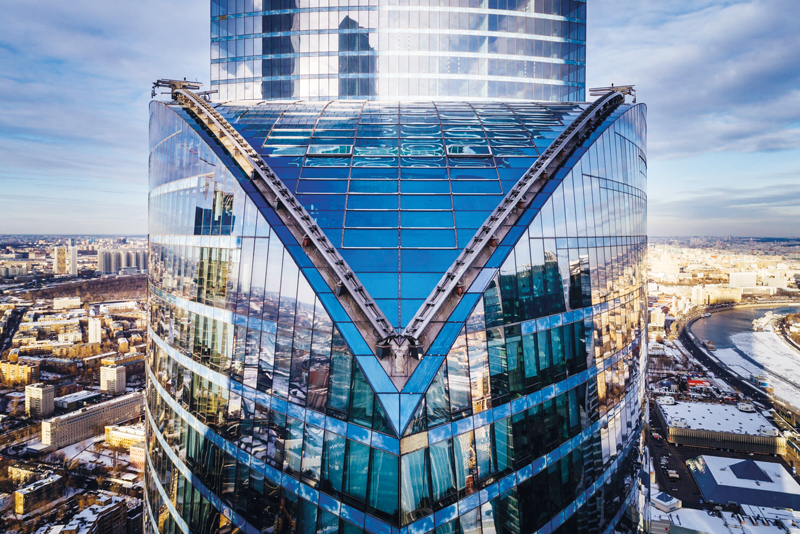
Cases of bridgemen - are not Pyrrhic victories.
In the summer of 2021, against the backdrop of a rise in the price of building materials, even the kings of state orders spoke out with public concern for their future. Vladimir Putin was approached by the heads of the eight largest companies building infrastructure in the country, including Arkady Rotenberg's SGM-Most (which built the Crimean Bridge), Gennady Timchenko's Stroytransgaz (which is building the Yamal-Europe gas pipeline, stadiums for the 2018 World Cup and major regional bridges, for example, Frunzensky) and "Autobahn" (also working with Arkady Rotenberg now over the Moscow-Kazan highway). They described the state of the construction industry as "crisis", and the total losses of companies over the past five years, since 2015, were estimated at 137 billion rubles. One of the reasons for this situation, as follows from the letter, is the pricing system in budget construction, which does not correspond to market realities. Against the backdrop of a rise in prices for most materials by at least 50%, the Ministry of Construction promised to adjust estimates for infrastructure by a maximum of 30%.
The largest Russian transport builders can be understood. Although more bridges and tunnels were built in the era of Vladimir Putin than under any other ruler of Russia (including the completion of 16 Soviet long-term construction projects back in the first decade of the 2000s), and the construction of new transport facilities takes an average of 6 years (the term of one presidential cadence in Russia) spent more than 880 billion rubles. According to the estimates of the Ministry of Construction, this is 2% of GDP per year, or, since 2005, a third of the petrodollars received by the country.
Along with the successes of the Russian agrarians, again, as under the tsar, feeding the whole world, it is bridge building that is most often recorded by the admirers of the Russian president as the undeniable successes of the era. Of the 32 longest bridges in Russia, 22 were built after 2000, estimates of the number of bridges over 100 meters in length also vary, but there are likely more than 200 in 21 years. It is difficult to understand how much each bridge contributes to GDP growth, but in general, the picture in the spirit of Roosevelt's New Deal cannot but delight. Moreover, compared to Soviet times, bridges began to be built in just 2–3 years, compared to the Soviet average of 10 years. And consisting of many dozens of bridges of the Central Ring Road in the Moscow region and Tavrida - only a little more.

And this is against the backdrop of constant growth in quality. Only in the summer of 2021, the requirements for the design of bridges (SP 35 “Bridges and Pipes”) and tunnels (SP 122 “Railway and Road Tunnels”) were again tightened, so that with the help of better technologies (including bearings, expansion joints and monitoring of bridges) make structures more durable. It’s hard not to compare the situation with developers complaining about the “unbearably tough” requirements for residential construction, which include ramps for the disabled and fire safety in 2021 (in general, the cost of housing construction increased by 20% over the year). Bridge building technologies, of course, also do not stand still. It is not surprising that the man who won the largest Soviet long-term construction, Yuri Konstantinovich Sevenard, who completed the construction of the St. Petersburg dam 40 years after the start (which became a key part of the ring road of the northern capital - the Ring Road), once noticed, looking at the modern formwork of PromStroyKontrakt at the Zagorskaya PSP, that This is new age technology.
However, it was during the reign of Vladimir Putin that several market leaders went bankrupt, which helped to achieve such impressive success. In 2015, Omsk Mostovik went bankrupt after a quarter of a century of operation, having overstrained itself on bridges in Vladivostok and the Olympic infrastructure. Even earlier, in 2014, NPU Kosmos, which built interchanges between the Moscow Ring Road and Treshki in the early 2000s, became bankrupt. And if some of its facilities, for example, the long-suffering Alabino-Baltic Tunnel, eventually organically fit into the Moscow infrastructure, then pieces of the “fourth transport ring”, also started by Cosmos in the time of Luzhkov, were not immediately and not without difficulty squeezed into the system " chord".
A typical example is an eight-story garage and parking complex (ATC) for 3,500 places with an area of 128 thousand square meters. m. with a tunnel under it along the border with the Izmailovsky forest park, built in 2008–2011. using the most modern formwork of PSK (PSK-CUP) at that time. It was also supposed to become the hub of the "Fourth Transport Ring" (cancelled, even before the completion of the construction of the ATC). Nearby, an elevated pedestrian bridge was built across the chord, the railway line and the railway line (Sokolinaya Gora station). But only the completion of the North-Eastern Expressway revived these places, which had been empty for almost 10 years after the construction of the facility. Everyone clearly saw how the panel structures of the Soviet era, like the Khovrinsky hospital, quickly fell into disrepair, simply fell apart. Modern monolithic construction against this background guarantees a greater safety of structures, even after serious downtime. Let's look at a few typical examples.
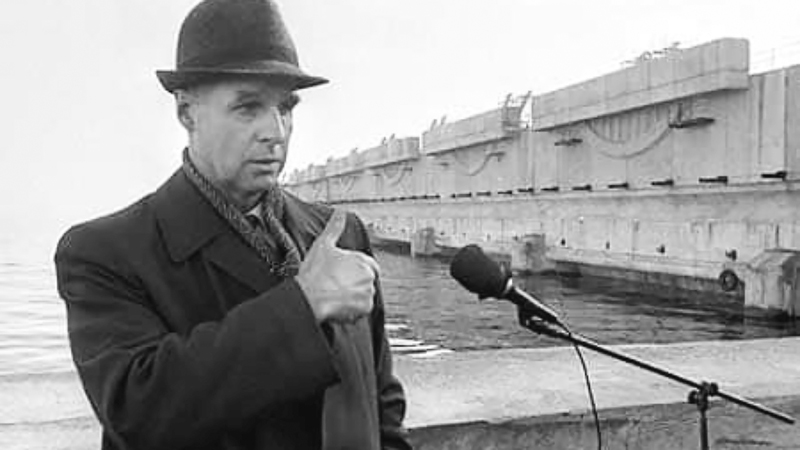
Reprofiling as a way to deal with protracted construction.
As the practice of the last quarter of a century shows, construction can stop for a variety of reasons - from the global economic crisis to private financial problems of investors. But the continuation of construction after a break is often a matter of finding meaning and strength for an unfinished object in the Russian climate, which includes not only extreme precipitation, but also, for example, numerous flooded soils that can destroy the foundation.
With residential facilities, everything is simple - after all, there is pressure from "shareholders" and the general politicization of the "housing issue". For example, no matter how low-rise structures of the White City residential complex in Solnechnogorsk, abandoned by the Urban Group, suffer, they will be completed for 550 waiting buyers. With non-residential objects, everything is more complicated. Abandoned water parks near Prechistenskaya embankment and Victory Park in Dorogomilovo stood for more than 12 years before becoming the "Cultural Center of the Chaika Basin" and an LCD with an aquarium on the street. Fonchenko brothers. The educational and laboratory buildings of Moscow State University on Vernadsky Avenue existed as a huge gloomy industrial zone for more than 20 years before the famous investor Katerina Tikhonova began to implement her ambitious scientific project there. Away from the capital, such stories also occur. The building on Zapovednaya Street on the outskirts of St. Petersburg was built in the 1990s for the Research Institute of Astrophysics of the Russian Academy of Sciences, and in 2021 the already mentioned Public Law Company (PPK) “A Single Customer in the Construction Industry” decided to turn a huge long-term construction into a repository of Kunstkamera objects. There are already about 120 such facilities at the PPC (of which a fifth are scientific and medical), they are assembled from long-term construction projects of ministries, departments (Rostourism, Rospotrebnadzor, etc.), a number of universities (RANEPA, Moscow State University), as well as the Administrative Office of the President, the Prosecutor General's Office, the Supreme court, Rosatom and Roskosmos.
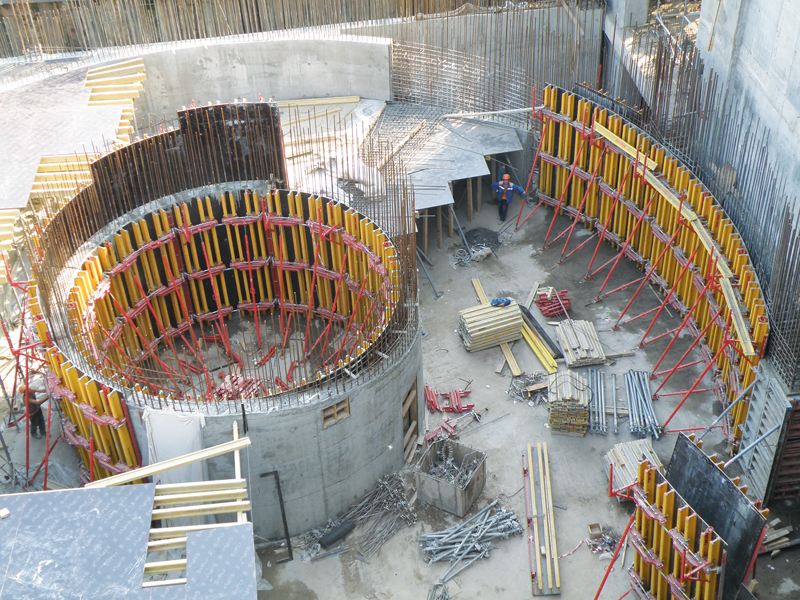
A similar practice is used by city halls. Sometimes this happens after the presentation of a new way to use the building. Thus, the Krasnodar mayor's office decided to complete the construction of the famous "Gothic castle" in Zaton, turning the well-preserved complex thanks to high-quality monolithic formwork into a children's sports center. Sometimes the method of use becomes a stumbling block for the removal of long-term construction. This is happening right now in Kaliningrad, where the mayor's office wants to build Scandinavian-style residential complexes on a huge brutalist structure of the House of Soviets, which is opposed by the city's architects, some of whom dream of restoring the city's castle of Koenigsberg. When there is a lot of money, like the Moscow mayor’s office, you can start completing the construction without yet having announced plans for use - for the future, as is done with the 12-story colossus of the building of the military space department near the Shabolovskaya metro station in Moscow (hanging for 29 years on the balance sheet of the RTR television channel, to which it turned out to be unnecessary).
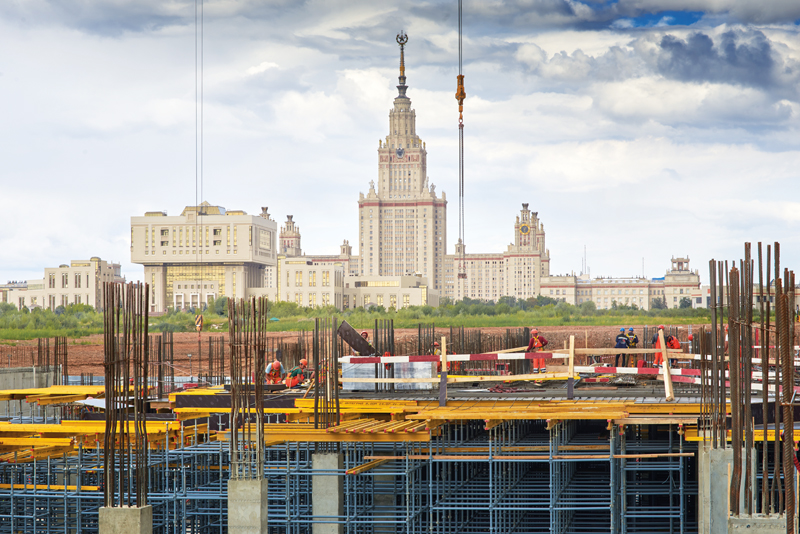
Of course, no one is immune in our troubled era from an emergency. A typical example is the Moscow construction complex, which was only recently on Vorobyovy Gory, having completed the suspended construction of the cable car and has already received a new long-term construction in 2021, on an even larger scale: a tennis center near the reconstructed Druzhba stadium in Luzhniki. The largest object in the style of deconstructivism (with deliberately broken shapes and visual complexity) with an area of 36 thousand m² and a height of 27 meters hung for at least another 2 years. However, there is hope that this is the exception rather than the rule. The two main weapons of builders - speed and good technology (formwork, wind protection, rebar sleeves) make it possible to break through any difficulties. As Deputy Prime Minister of the Russian Federation Marat Khusnullin, who oversees the industry, said: “If we take on an object, then it is impossible to build for more than three years. Very complex ones - a little longer. If there is no funding, we cannot start. to which Marat Shakirzyanovich promised to eradicate the problem of deceived equity holders, they will show how long-term construction really is a thing of the past.

 DOWNLOAD
DOWNLOAD LOOK
LOOK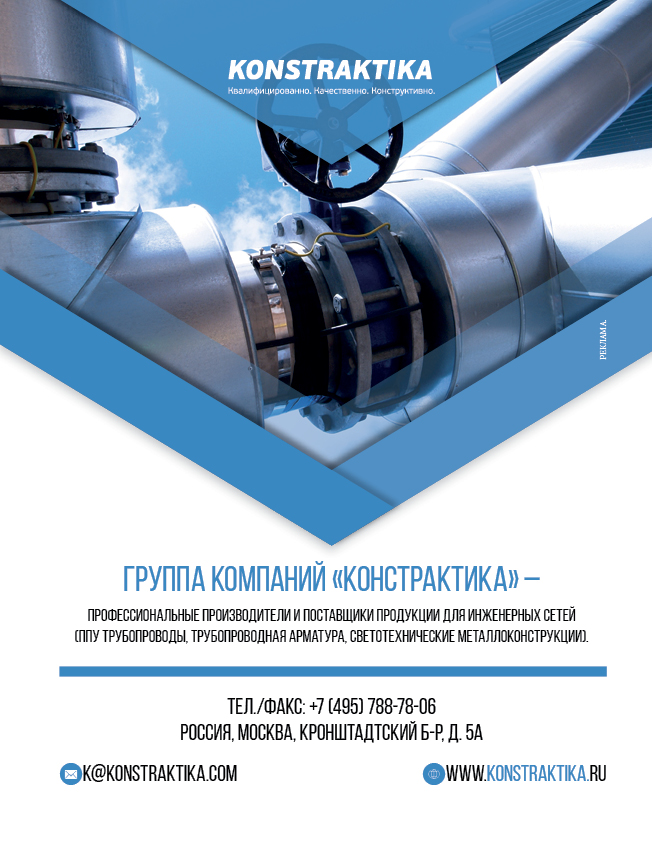
 Top Content of the Month
Top Content of the Month


